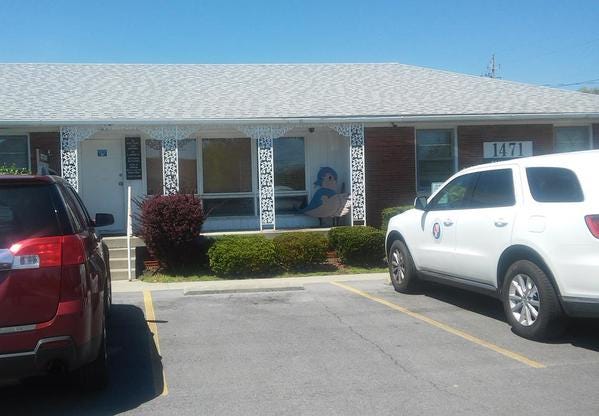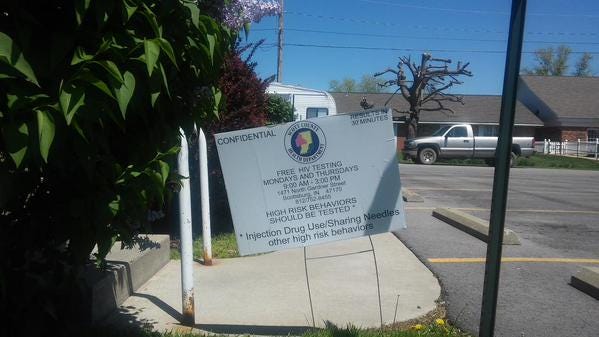Nazaroo
New member
The Drug That’s Infecting Indiana One rural American town is in the grip of a dramatic outbreak of HIV — and right at its heart is a single, powerful, dangerous addiction. By Leigh Cowart Follow live I’ve never been escorted out of a community center by two large men, but I suppose there’s a first time for everything. Here, at ground zero for an HIV outbreak currently ravaging the sparsely populated Scott County in rural Indiana, things are tense — no doubt fueled by the presence of a national news-making rate of disease transmission. The reporter in me balks at the proverbial — or, in this case, literal — doors slamming in my face. But I felt a wave of gentle pride at the steadfast way I was removed from the premises. Patient confidentiality is a big deal, and no one who cares wants to risk scaring off people who need health services just because some nosy ***** with a notepad wants to ask a few questions. Listen, I get it. I mean, perhaps the silent meatman that my ejectionist brought as backup was a bit much. Then again, maybe I looked like I was spoiling for a fight. Either way, there are more important things going on in Scott County than whether or not a journalist needs two escorts out of the building, or just one. Back in January, the Indiana State Department of Health began looking into HIV in Scott County after 11 new cases were confirmed. The number was notable: historically, the county sees fewer than five cases a year in a community of 4,200. As the clock stumbled forward, the picture only got bleaker. By March 26, a public health emergency was declared. To date, there have been 142 cases, with new seroconversions coming almost every day. These cases are linked to intravenous drug use. According to a report from the CDC looking at the first 135 incidents, 80% of them occurred in users with a history of IV drug use. Four of the remainder said they had no needle-based drug use, and the rest still need to be asked. But every single confirmed IV drug user reported using the same drug: Opana. Oxymorphone, know by the brand name Opana, is a semi-synthetic opioid painkiller. It is also strong as ****. It’s got an extended release, and while taking it follows the common practice of crushing, then dissolving, and then cooking, the resulting fix is definitely strong enough to share. And, in a state like Indiana where carrying a needle or syringe without a prescription can get you in trouble with the law, the communal aspect of drug taking and needle sharing seem to have created the perfect conditions for bloodborne disease transmission. Those surveyed reported injecting anywhere between four and 15 times daily, with the number of injection partners ranging from one to six per event. It’s the first time that an outbreak of HIV has been linked to the injection of prescription drugs. It probably won’t be the last. To combat this significant problem, Governor Mike Pence authorized a short-term needle exchange program, which is underway at the Community Outreach Center. 

The center, which opened March 30th, and kicked me out on Monday morning, serves as a one-stop shop for those in need of services, providing ways for members of the community to get State-issued ID cards and birth certificates, enroll in health insurance, get vaccinated for tetanus or hepatitis, as well as giving them job counseling and local training. However, perhaps most importantly, the center offers free HIV testing, a needle exchange service, and provides information about prevention, treatment, and substance abuse referrals. It’s also where I started my search for answers about how this outbreak came to be. The center is tucked away on a side road in this small town. Still, you can’t miss it: two large roadside construction signs face the street from both directions, shouting the opening hours in flashing orange lights. Inside, the building is spartan, with a bare waiting area decorated with two rows of chairs facing a table full of pamphlets. The entrance to the needle exchange is separate from the public entrance. Both are marked with copious signage. At first glance, it just looks like another yard, but you realize very soon that it’s something else entirely. It feels sleepy and quiet, but the stakes couldn’t be higher: if the outbreak is to be stopped, we must first at least find the scope of it. And the numbers tick higher every day. We’re at a tenuous point. Over the last two decades, HIV infections related to intravenous drug use have been on the decline across the country, but this current outbreak has experts worried. Scott County is small, but it’s not unique; like many rural counties, it has high unemployment, a large percentage of adults who have not finished high school, and many in the community with limited access to healthcare. Add on powerful, shareable opiates and government initiatives to limit access to clean needles , and you, my friend, have the makings of a catastrophe |
